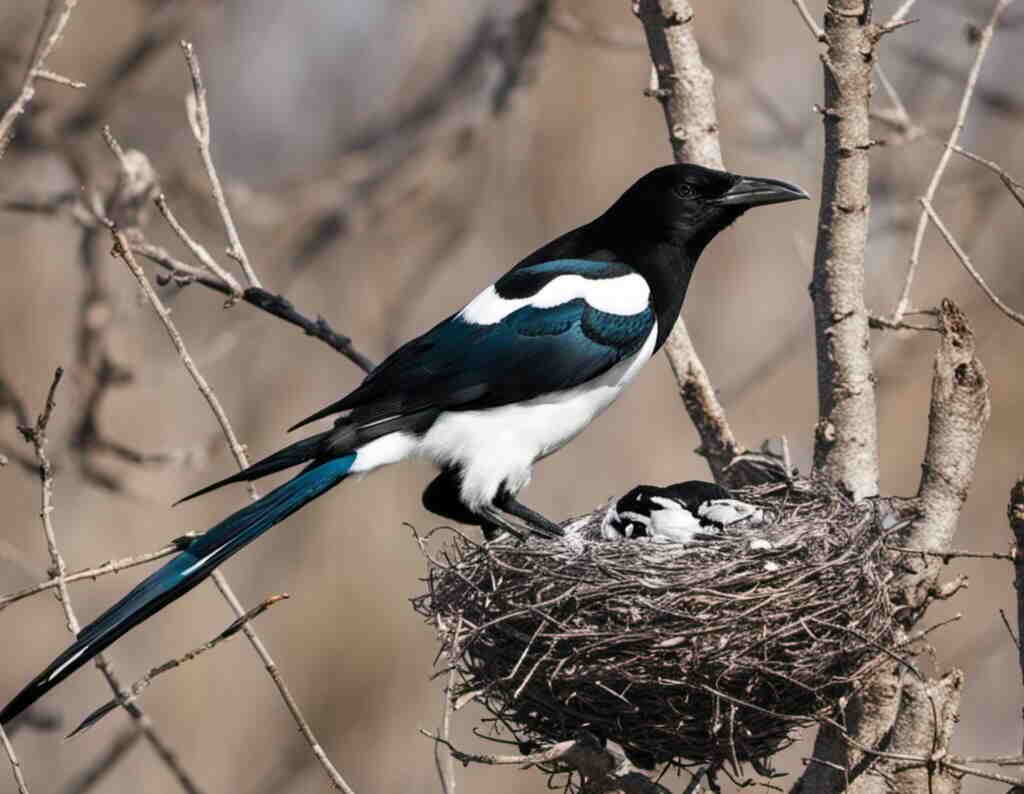Bird behavior is fascinating, and one intriguing phenomenon is the tendency of some birds to destroy their own nests. This behavior is puzzling, as nest-building is a time-consuming and laborious process. Scientists have long sought to understand the reasons behind this behavior, and through years of research and observation, they have uncovered several factors that contribute to nest destruction in birds.
In this article, we will explore the various causes behind bird nest destruction. We will delve into the environmental, behavioral, and biological factors that drive this behavior. By examining the patterns and behaviors of birds, we can gain a better understanding of why they engage in this intriguing behavior.
Table of Contents
- 1 Key Takeaways:
- 2 Why Do Birds Destroy Their Own Nests?
- 3 Understanding Bird Nest Destruction
- 4 Nesting Habits of Birds
- 5 Causes of Nest Destruction
- 6 Environmental Factors and Nest Destruction
- 7 Predator-Prey Dynamics and Nest Destruction
- 8 Nest Defense and Territory Disputes
- 9 Parental Behavior and Nest Abandonment
- 10 Species-Specific Nesting Habits
- 11 Human Impact on Nest Destruction
- 12 Mitigating Nest Destruction
- 13 Conclusion
- 14 FAQs
- 14.1 Why do birds destroy their own nests?
- 14.2 What are the causes of nest destruction in birds?
- 14.3 How do environmental factors contribute to nest destruction?
- 14.4 Do bird predators play a role in nest destruction?
- 14.5 How do territorial disputes affect nest destruction?
- 14.6 What role does parental behavior play in nest abandonment?
- 14.7 Are there species-specific nesting habits related to nest destruction?
- 14.8 How does human impact contribute to nest destruction?
- 14.9 What can be done to mitigate nest destruction?
- 15 Author
Key Takeaways:
- Bird nest destruction is a common behavior among avian species.
- Understanding the reasons behind this behavior requires examining various factors such as environmental changes, predation, territorial disputes, and parental behavior.
- By gaining insights into bird behavior, we can work towards better conservation and protection of bird populations and their nesting habitats.
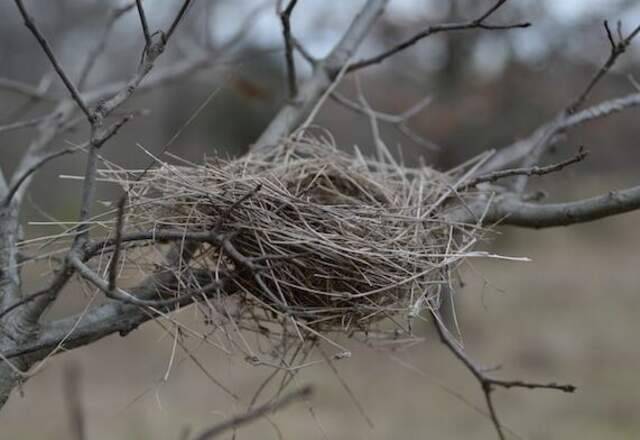
Why Do Birds Destroy Their Own Nests?
There are several reasons why birds may destroy their own nests. One common reason is to remove parasites, such as mites or lice, which can infest the nest and harm the birds or their young. By destroying and rebuilding the nest, the birds can eliminate the parasites and create a fresh, clean environment.
Another reason why birds may destroy their own nests is to deter predators. If a predator has discovered the location of a nest, the birds may destroy it and build a new one in a different location to avoid being found again.
Finally, some bird species may destroy their own nests as part of their natural breeding cycle. For example, some songbirds will build multiple nests in a season, and will abandon or destroy the old nests after their young have fledged in order to make room for a new clutch of eggs.
Understanding Bird Nest Destruction
Understanding why birds abandon or destroy their nests is a complex subject that requires examining various bird behaviors. Nest destruction is a behavior seen in many avian species, and it may occur for a variety of reasons.
One of the most common reasons for bird nest abandonment is predation. Birds may abandon their nests if they believe predators are too close. They might also abandon their nests if they detect the presence of a predator lurking nearby. According to research, birds are more likely to abandon their nests if predators continue to attack them.
Another reason for nest destruction is environmental factors. Natural disasters such as storms, floods, and fires can cause bird nests to be destroyed. Human-made environmental changes such as deforestation, construction, and pollution can also lead birds to abandon their nests.
Territorial disputes among birds can also lead to nest destruction. Birds can become aggressive when defending their territory, resulting in the destruction of nests in the area.
Finally, parental behavior can play a role in nest abandonment. Stress, illness, or the death of a mate may cause birds to abandon their nests, leaving eggs or chicks vulnerable to predators.
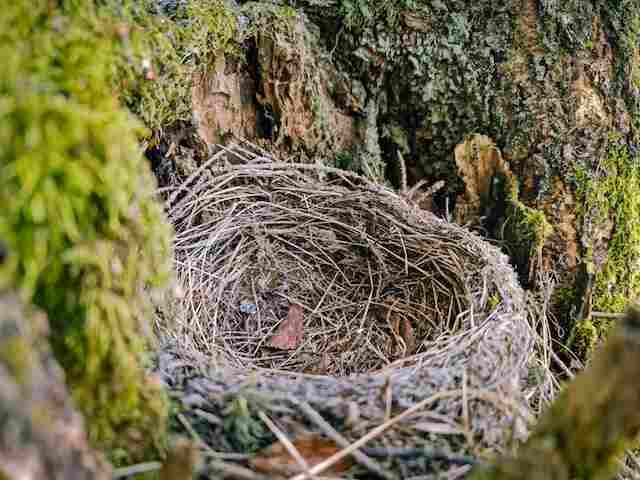
Nesting Habits of Birds
Birds have a remarkable ability to construct nests, with each species having its unique style and habits when it comes to nesting. These habits can range from the type of materials used, location selection, and timing of nest construction.
Some birds, such as the Bald Eagle, construct large and conspicuous nests, while others, like the Ruby-throated Hummingbird, build small and compact nests. Some species of birds make nests on the ground, while others build their nests in trees, on cliffs, or even on man-made structures like buildings and bridges.
Understanding the nesting habits of birds is crucial in comprehending why some species may engage in nest destruction. Some birds may demolish nests that have become unsuitable for breeding, such as those that have been flooded or damaged by severe weather conditions.
Other species may destroy their nests altogether for reasons related to territorial behavior or predation. They may discard old nests and build new ones in a different location to reduce the risk of predation or to acquire a more favorable nesting location.
Unique Nesting Behaviors
The nesting habits of birds are diverse and often fascinating. Various species have evolved unique behaviors to construct their nests and protect their young. For instance, some species of birds will use mud to construct their nests, while others will gather grass, twigs, feathers, or even spider webs.
Some bird species are known to decorate their nests with objects such as flowers, feathers, and shiny objects. The Bowerbird, for example, builds elaborate structures and decorates them with bright and colorful objects to attract mates.
These nesting habits can provide insights into why some birds engage in nest destruction. By learning about the unique nesting behaviors of different bird species, we can better understand why they may abandon or destroy their nests and take steps to prevent it from happening.
Overall, understanding the nesting habits of birds is an essential step in comprehending why some species may engage in nest destruction. By recognizing the behaviors and patterns exhibited by different bird species, we can work towards better conservation of bird populations and their nesting habitats.
Causes of Nest Destruction
Bird nest demolition is a behavior that has puzzled ornithologists for years. Various factors have been identified as potential causes of nest destruction in birds. Here are some of the reasons why birds destroy their own nests:
- Environmental changes: Natural disasters such as floods, fires, and storms can damage bird nests, leading to their abandonment or destruction.
- Predation: Predators such as snakes, rodents, and birds of prey can target bird nests, causing significant damage or destruction.
- Territorial disputes: Birds may engage in aggression or territorial disputes with other birds, resulting in nest destruction.
- Parental behavior: Stress, illness, or other factors may cause parents to abandon their nests, leading to the destruction of the nest structure.
Understanding these bird nest demolition factors can help researchers and conservationists work towards preserving bird populations and their nesting habitats. By addressing environmental concerns, reducing predator threats, and minimizing human interference, we can reduce the instances of nest destruction in avian species.
Environmental Factors and Nest Destruction
Understanding the environmental factors that contribute to nest destruction in wild birds is key to developing effective conservation strategies. Natural disasters, habitat alterations, and human interference are among the environmental factors that can trigger birds to destroy their nests.
When a natural disaster such as a hurricane or flood strikes, birds may abandon their nests or destroy them in an attempt to survive. Habitat alterations caused by activities such as deforestation or urban development can also disrupt bird nesting patterns and lead to nest destruction.
Human interference is another significant environmental factor that can contribute to nest destruction in wild birds. Disturbances caused by people or pets can cause birds to feel threatened or stressed, leading them to abandon or destroy their nests.
By understanding the impact of environmental factors on nest destruction behavior in wild birds, conservationists can work towards creating and maintaining suitable habitats that minimize the instances of nest destruction.
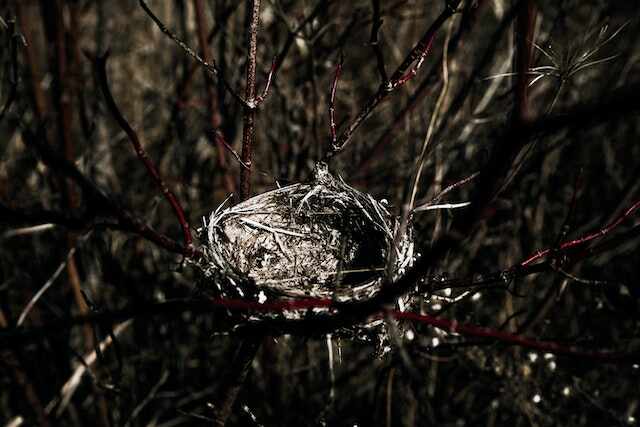
Predator-Prey Dynamics and Nest Destruction
One of the most common causes of nest destruction in birds is due to predation. Birds face many natural predators, including snakes, raccoons, and other birds, and these predators often target bird nests as a source of food.
When a predator approaches a nest, the adult birds will often attempt to drive them away by displaying aggressive behaviors. This can include vocalizations, dive-bombing, and physical attacks. However, if the predator is persistent, the adult birds may abandon the nest altogether, leaving it vulnerable to destruction.
Birds have also developed various tactics to protect their nests from predators. For example, some bird species will build their nests in hidden locations to make it harder for predators to find them. Others will construct their nests with materials that are harder for predators to penetrate, such as thorny branches or cactus spines.
Ultimately, the predator-prey dynamics between birds and their predators play a significant role in nest destruction. As predators evolve new strategies for finding and accessing bird nests, birds will continue to adapt and evolve their own defensive tactics.
Nest Defense and Territory Disputes
When it comes to bird nest abandonment reasons, territorial disputes are a common factor. Birds are fiercely protective of their nests, and will often engage in aggressive behavior when other birds encroach on their territory. These territory disputes can lead to nest destruction, as birds may destroy their own nests in an attempt to eliminate any potential threats.
In the wild, territorial disputes can be particularly intense during breeding season. Male birds will often defend their nesting territory, engaging in vocal and physical displays of aggression to deter other males from approaching. Female birds may also defend the nest, using similar tactics to protect their eggs or young.
Some bird species, such as the American Goldfinch, are known to engage in “tidying up” behavior, where they will destroy nests that they deem to be too messy or dirty. While this behavior may seem counterproductive, it is thought to be an adaptive mechanism to deter parasites and other potential threats to young birds.
Overall, territorial disputes and nest defense are significant factors in nest destruction behavior in wild birds. Understanding these dynamics is crucial for conservationists and researchers seeking to protect bird populations and their habitats.
Parental Behavior and Nest Abandonment
Parental behavior plays a significant role in bird nest destruction. Stress, predation, and lack of food are some of the factors that can lead to parents abandoning their nests, which can result in the destruction of the nest structure as well. Additionally, in some cases, chicks may die or hatch in an unhealthy state, leading to parents abandoning the nest.
Parental behavior is especially important in protecting the eggs and chicks. Parents will use various tactics to protect their offspring from predators, including diving at them, pretending to be injured, or vocalizing to signal danger. However, if parents feel overwhelmed or threatened, they may abandon the nest entirely.
Another factor is parental stress. Environmental and human disturbances can cause parents to become stressed, leading to nest abandonment. For example, the presence of predators or noisy construction near the nest site can cause parents to abandon their nest.
Overall, parental behavior is a crucial factor in the survival of bird populations and their nests. By understanding the reasons for parental abandonment and addressing those issues, we can help mitigate the instances of nest destruction in avian species.
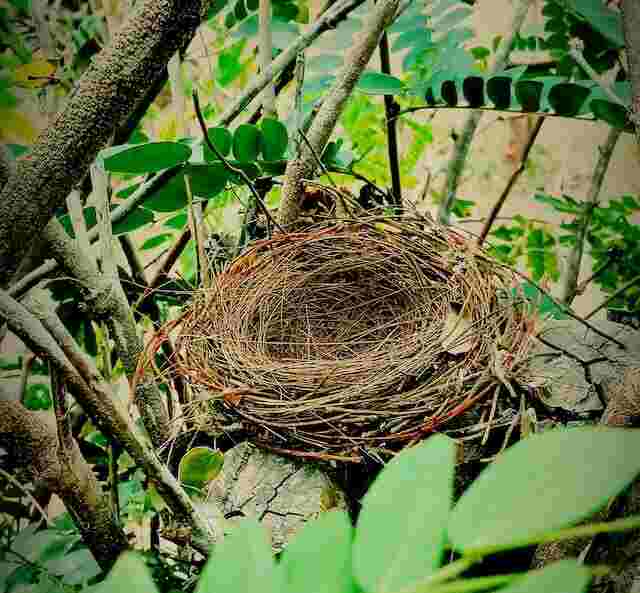
Species-Specific Nesting Habits
Birds exhibit diverse nesting habits, ranging from simple ground nesting to elaborate tree-top constructions. Understanding the unique nesting traits of each bird species is crucial to comprehending why they may engage in nest destruction.
For instance, the Northern Flicker, a woodpecker species, often excavates nest cavities in dead trees or wooden structures with the help of its long bill. However, these nesting sites often fall prey to destruction from other woodpeckers looking to claim the spot for themselves.
On the other hand, some birds like the African Grey Parrot are known to be fastidious nest builders, constructing elaborate nests in tree cavities or cliffs to ensure the safety of their young. However, if they perceive a threat, they may abandon the nest or destroy it entirely to deter predators.
Similarly, species with colonial nesting habits, such as gulls and herons, may engage in nest destruction due to overcrowding or territorial disputes. Understanding the nesting habits of various avian species provides valuable insights into why some birds may destroy their own nests.
Human Impact on Nest Destruction
Human activities can have a significant impact on bird nesting habitats, leading to nest destruction. Understanding bird nest destruction causes is crucial in protecting bird populations and their habitats.
One of the most common causes of nest destruction is habitat destruction due to human activities such as urbanization, deforestation, and agriculture. These activities cause a loss of natural habitats for birds, leading to increased nest destruction as they struggle to adapt to new and often unsuitable environments.
Human interference with bird nesting habits can also contribute to nest destruction. For example, when people disturb bird nests by getting too close or taking eggs or chicks, it can cause the parents to abandon the nest, leading to eventual destruction.
Another factor is man-made structures such as buildings, roads, and power lines that disrupt bird nesting habitats. Birds may build nests in areas that are dangerous or unsuitable, leading to increased nest destruction and mortality.
To mitigate the impact of human activities on bird populations and their nesting habitats, it is essential to raise awareness of the issue and work towards creating suitable habitats for birds to nest and thrive. This can include measures like creating green spaces in urban areas and restoring natural habitats in rural areas.
In conclusion, understanding the impact of human activities on bird nesting habits and the causes of nest destruction is essential in conservation efforts. By working towards minimizing human impact on bird populations and their habitats, we can help protect these important parts of our natural world for generations to come.
Mitigating Nest Destruction
Nest destruction in avian species can have severe consequences on bird populations, especially when the destruction is a result of human impact or interference. It is critical to take measures to mitigate nest destruction to preserve bird habitats.
There are several reasons for birds destroying their nests, and conservationists must address these issues to limit the instances of nest destruction. For example, certain bird species may abandon their nests due to stress, threats, or environmental changes. To mitigate this issue, conservationists can create suitable habitats that mimic the natural nesting environments of the bird species. This could include planting specific trees or shrubs that the birds prefer or providing nesting materials that mimic their natural habitats.
Another approach to mitigating nest destruction is by using nest protection measures. These measures could include placing birdhouses in secure locations, installing bird barriers to keep predators at bay, or using decoys to deter predators.
One effective strategy is to engage in conservation efforts to conserve and protect bird populations. This could include establishing policies that protect nesting habitats or launching education campaigns that raise awareness about the importance of preserving bird habitats.
In conclusion, mitigating nest destruction requires an understanding of the reasons why birds destroy their nests. By addressing the factors that contribute to nesting destruction, adopting conservation efforts, and implementing protective measures, we can work towards preserving bird populations and their habitats.
Conclusion
In conclusion, understanding why birds destroy their own nests requires an exploration of various factors, including environmental changes, predator-prey dynamics, territorial disputes, and parental behavior. By recognizing these triggers, we can better grasp the motivations behind nest destruction in different bird species and work towards conservation efforts to protect their nesting habitats.
It is important to note that human activities can also have a significant impact on nest destruction. Man-made structures or disturbances can disrupt bird nesting habits and contribute to nest destruction. Therefore, it is crucial to raise awareness and implement measures to minimize the instances of nest destruction in bird populations.
Protecting Birds and Their Habitats
Conservation efforts, such as creating suitable habitats and implementing nest protection measures, can go a long way towards mitigating nest destruction in birds. By preserving their nesting habitats and minimizing human interference, we can ensure the survival of different bird species and their critical role in maintaining ecosystem balance.
Overall, this comprehensive guide has shed light on the intriguing phenomenon of why birds destroy their own nests. By examining the various causes and factors that contribute to this behavior, we can gain a deeper understanding of bird behavior and work towards protecting them and their habitats for future generations.
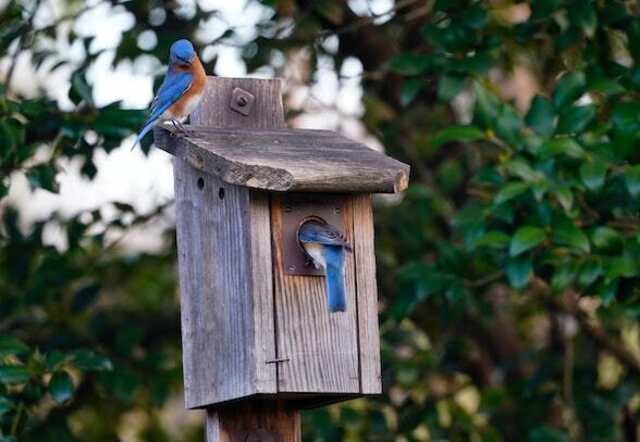
FAQs
Why do birds destroy their own nests?
Birds may destroy their nests for a variety of reasons, including territorial disputes, environmental changes, predation threats, or parental stress. Each bird species has its own unique motivations and behaviors related to nest destruction.
What are the causes of nest destruction in birds?
Nest destruction in birds can be caused by factors such as predation, habitat alterations, territorial disputes, or parental abandonment. Understanding these causes can provide insights into the complex behaviors exhibited by birds in relation to their nests.
How do environmental factors contribute to nest destruction?
Environmental factors, such as natural disasters or human interference, can disrupt bird nests and lead to destruction. Changes in the habitat, including alterations to nesting sites, can prompt birds to abandon or destroy their nests in search of more suitable environments.
Do bird predators play a role in nest destruction?
Yes, predation can be a significant factor in nest destruction. Birds face the constant threat of predators targeting their nests and eggs. To protect their offspring, birds may resort to destroying their nests as a strategy to thwart potential predators.
How do territorial disputes affect nest destruction?
Territorial disputes among birds can lead to nest destruction. Birds may engage in aggressive behaviors to defend their territories, which can result in nest destruction if an intruder threatens their established nesting area.
What role does parental behavior play in nest abandonment?
Parental stress, threats, or other factors can lead to nest abandonment by bird parents. When parents feel their offspring are in danger or they are unable to fulfill their parental duties, they may abandon the nest, ultimately resulting in nest destruction.
Yes, different bird species exhibit unique nesting habits that can impact nest destruction tendencies. Some species may have more fragile nests or engage in behaviors that make their nests more prone to destruction. Understanding these species-specific traits is crucial in comprehending nest destruction patterns.
How does human impact contribute to nest destruction?
Human activities can disrupt bird nesting habits and contribute to nest destruction. Examples include the destruction of natural habitats, disturbance of nesting sites, or the construction of man-made structures that interfere with bird nesting behaviors.
What can be done to mitigate nest destruction?
Mitigating nest destruction requires conservation efforts, nest protection measures, and creating suitable habitats. Conservationists and individuals can collaborate to raise awareness, promote responsible actions, and implement strategies that minimize the instances of nest destruction in bird populations.

